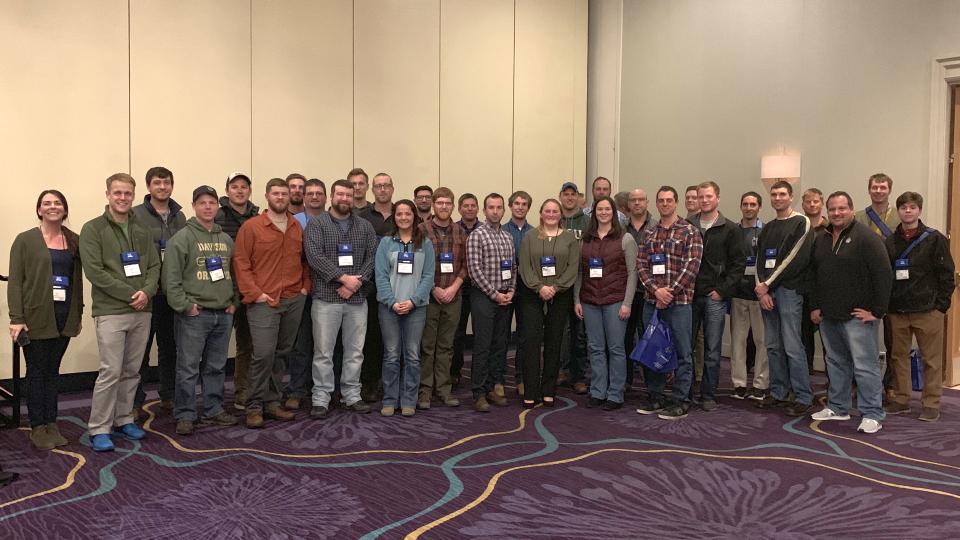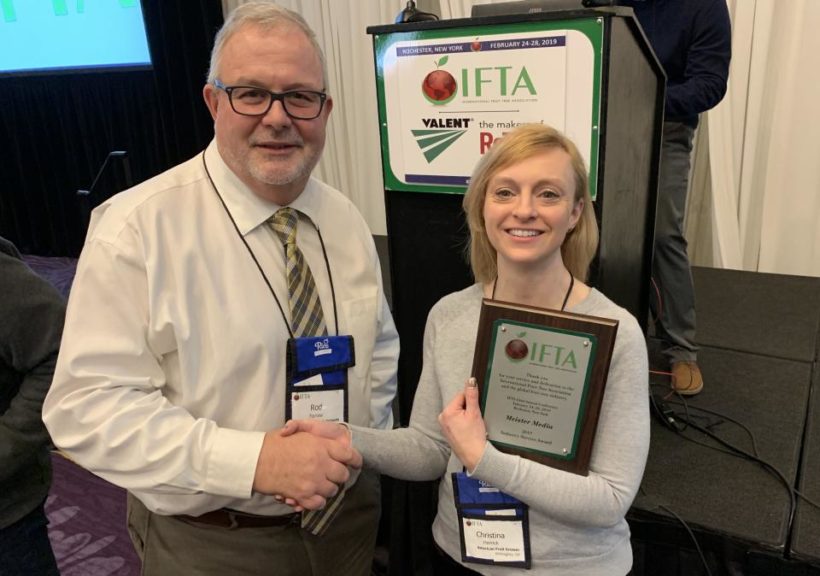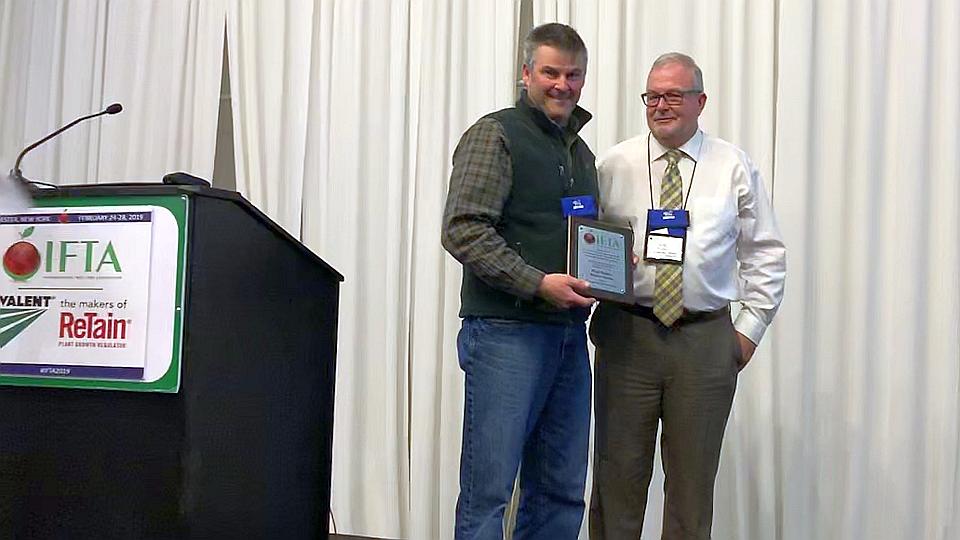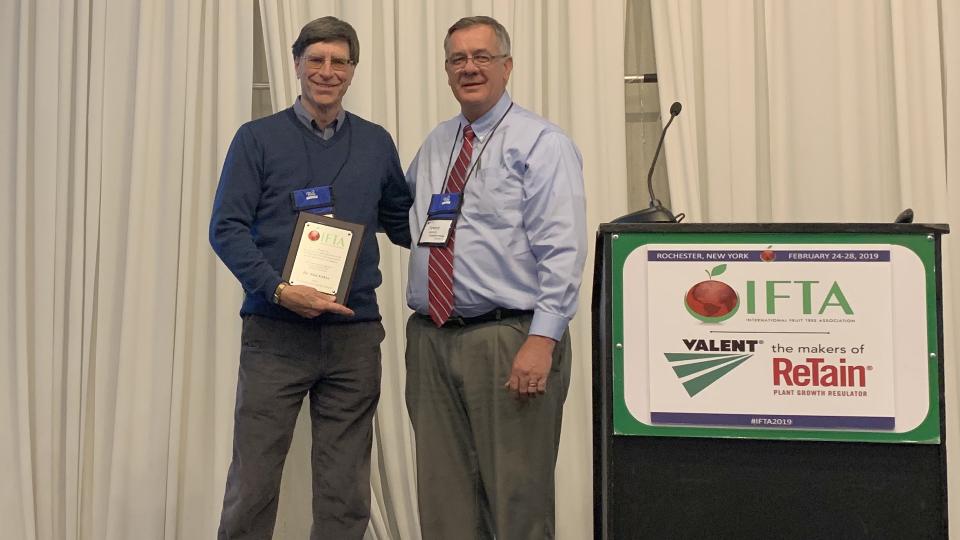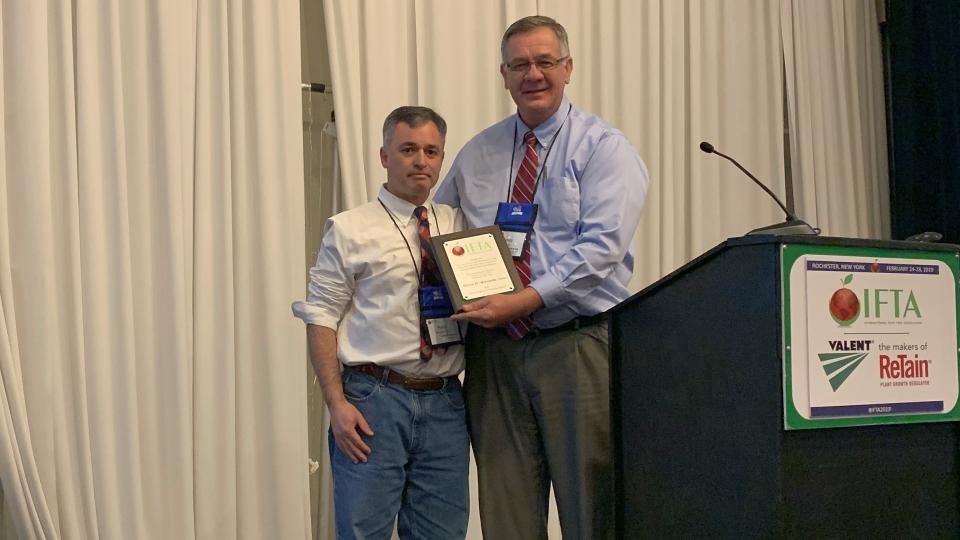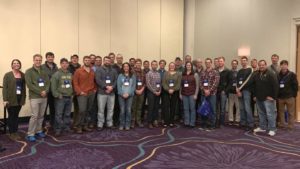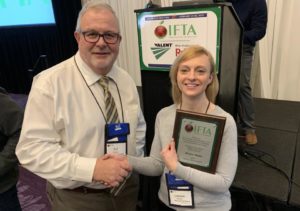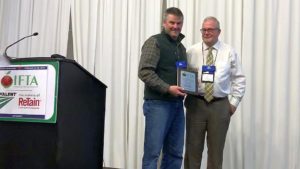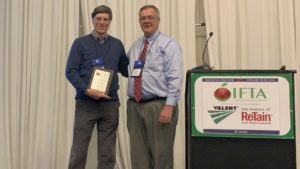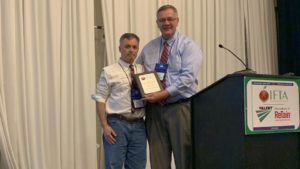Robots, Rootstocks and Revenue on the Front Burner for Fruit Growers
“We are never going to have a drop-in for humans in agriculture in our lifetime,” George Kantor of Carnegie Mellon University said as he kicked off the 2019 International Fruit Tree Association’s (IFTA) annual conference in Rochester, NY. Kantor, who gave the Robert Carlson Lecture, painted a broader picture of robotics within the tree fruit industry.
Instead of developing a robot to emulate humans, Kantor said, researchers are “developing a box of tools and people need to learn how to use the tools.”
These tools fall into three categories: sensing and perception, mobility, and manipulation. Each category is a specific milestone to automation, each with its own set of unique challenges.
Kantor is involved in a current mechanical pruning project where the deep neural network (also known as artificial intelligence) will learn how the pruners make a decision to cut.
“The robot didn’t come up with the measurements on its own,” he said.
For mechanical harvesting, he said the systems can only see what the human eye sees, for example in yield estimation, “we cannot count the apples you can’t see.”
The simpler the mechanization, the easier the device is to implement into the orchard.
“You can’t grab a thing unless you can see a thing,” he said. “Think about growing systems where the fruit is easily accessible. Be willing to rethink your operation.”
Kantor urged growers to help move the research along and help shape future research.
“You might not be excited about that camera that runs through the orchard.” But, Kantor said, “help us develop the curve [for use].”
Building on the idea of how rapidly things have changed, Mario Miranda Sazo of Cornell University said “things are moving very fast.”
And as quickly as things are changing and evolving in production, Miranda Sazo said growers need to focus on getting better light interception into the canopy to prepare for a wave of digital agriculture.
“Things are moving very fast,” he said. “We have to solve the issues right from the get-go.”
This means growers need to make good decisions on their orchard to begin with to prepare for the next step in automation.
When speaking about fruit thinning, Poliana Francescatto of Valent BioSciences echoed a similar sentiment, saying “it’s all about the right time, it’s all about the right number.”
And, building on the concepts introduced in the morning sessions, Matt Wells of New York Apple Sales encouraged growers to take a look at strategies to improve returns per bit and bins per acre.
“You want to be growing 88s or larger, because that’s where the money is,” he said. “That makes a difference in how profitable you are.”
Highlighting the costs of cull apples in the packinghouse, Wells said growers need to try to reduce poor quality apples going into the packer.
“There is more money that goes down the drain due to poor quality,” he said.
He also suggested growers consider early thinning because it isn’t an added cost but does take a different management strategy. But, “the potential is great, the payback is staggering.”
Root to Fruit
The afternoon sessions focused on individual components of a national project to improve the economics and environmental sustainability of current apple production systems focusing on rootstocks to improve disease resistance, fruit quality and yield, and tolerate environmental stresses. The project, directed by Lailiang Cheng of Cornell University, is referred to as Root to Fruit.
Gennaro Fazio of USDA-ARS said this project is “looking to take soil variables and scion variables and match up with rootstocks.”
Fazio said rootstocks can affect physiology and yields. Rootstocks also can induce branching and branch angles which may help with future automation.
“Yes, you can choose a rootstock to affect your biennial bearing,” he said.
And looking at how orchard systems and rootstocks come together, Terence Robinson of Cornell University noted, “It’s a pleasure to be back” from his three-year sabbatical. But, one thing that struck him was the explosion of Geneva rootstocks. There is a change happening in the market, he said, noting “there is no market” for traditional varieties.
“Consumers like the taste of new varieties,” he said. “Don’t plant varieties if it pays less than $300 a bin.”
In a 20-year study, the optimum density for production and returns is about 1,300 trees per acre.
“The economics show it’s not more profitable at an extreme density,” he said.
And, Robinson strongly encouraged growers to opt for more robust rootstocks that will fill the space in the next two to three years.
“We just can’t afford to plant small roots,” he said. “I’m so tired of walking into an orchard in third leaf and is low yielding. Find the variety that will give you high returns.”
Stefano Muscacchi of Washington State University said that before growers plant any rootstocks, a soil analysis is critical. Because not all rootstocks respond the same way to different soil types.
“If you don’t do an analysis of your soil, you don’t know where you want to go,” he said. “You have to know what you’re working with.”
Building upon the concept that rootstock impacts yield and nutrient uptake, Lee Kalcsits of Washington State University said growers can improve calcium balance with rootstocks, you can decrease fruit size with rootstock choice and that can reduce bitter pit in HC.
Cheng looked at differences in nutrient uptake of the scions ‘Honeycrisp’ and ‘Gala’ and that nutrient uptake’s influence on bitter pit. Since ‘Gala’ does not typically get bitter pit and ‘Honeycrisp’ does, it made understanding the responses of the two varieties easier. Larger fruit tends to have more bitter pit because each fruit gets more potassium, he said.
IFTA Awards
At this year’s conference, the IFTA awards were presented during the end of the morning sessions instead of at a banquet. As President Rod Farrow mentioned, it’s a chance for presentations to be made when a larger number of folks would be in attendance.
And, the editors of trade publications, including American Fruit Grower and Western Fruit Grower magazines were honored for Industry Service. Farrow noted how vital reports from annual meetings and summer tours are to the membership, noting, “it’s an invaluable service to our industry.” This award is fitting as American Fruit Grower and Western Fruit Grower Editor-At-Large Dick Meister has long been involved with IFTA and was recognized for Outstanding Work for the Industry and the Association in 1976.
Paul Wafler was named Grower of the Year. Farrow noted how Wafler had emerged from his father, Fritz’s, shadow and became an industry star. “I leave with my head spinning at how we’re going to keep up,” Farrow said of visits to Wafler’s orchard.
Wafler also modifies equipment on the farm, Farrow commented, “there isn’t a single piece of equipment he hasn’t modified.”
Miranda Sazo was honored with Outstanding Extension Educator Award. Terence Robinson noted that Miranda Sazo originally applied to be his technician, but he encouraged Mario to apply for a position with Cornell Cooperative Extension.
“Mario is a quick learner and quickly grew into a major force in Western New York,” he said.
In thanking the IFTA members for the award, Miranda Sazo pointed out how vital IFTA was to his
“If you are a new guy, if you are a serious commercial fruit grower, this is the best meeting.”
Alan Lakso of Cornell University was recognized as Outstanding Researcher.
“Among the scientific community, he’s considered among the top-tier, elite physiologists.”
Robinson remarked Lakso’s work on a carbohydrate model, fruit-growth rate model, and work on a stem water micro-sensor.
“This is a real special honor because those 46 years are for you,” Lakso said.





